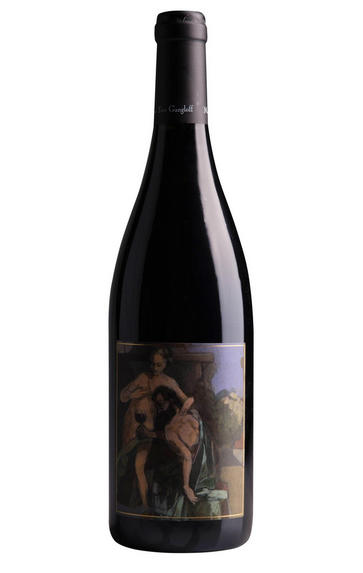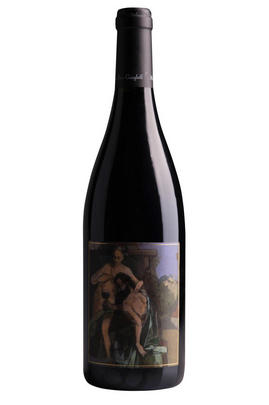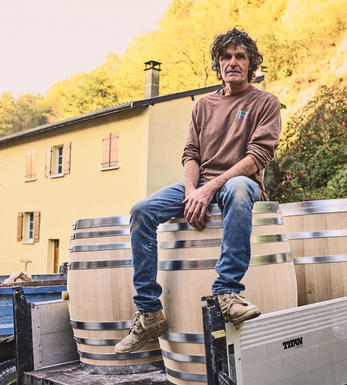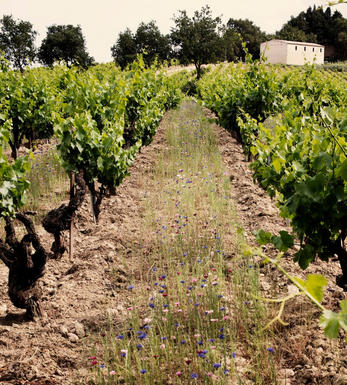
2010 Côte-Rôtie, Sereine Noire, Domaine Gangloff, Rhône

About this WINE

Domaine Yves Gangloff
Yves Gangloff is a hugely talented winemaker and is, with no exaggeration, a Rhône legend with rockstar credentials. Visiting his domaine is a completely different (and rather fantastic) experience when compared to most other estates. Great music plays, creating a lively but laid-back vibe, whilst Yves pours and chats. Energy and life fill the room, reflecting the vibrancy of his wines. These are consistently among the very best of the Northern Rhône. His popularity is legendary in France, which means that not very much of the already-diminutive production is available for the export market. Berry Bros. & Rudd are fortunate enough to have had a long-standing relationship with the great man – we are delighted to offer these wines, despite the tiny volumes.
As usual, Yves releases the wines later than most. We are therefore delighted to offer his delicious 2021 Condrieu as well as his two 2020 red cuvées: La Barbarine and La Sereine Noire. Make the most of La Sereine Noire this year, as 35% frost damage in Yves’ Côte-Rôtie yields meant that this cuvée was not made at all in 2021.

Côte-Rôtie
Côte-Rôtie is one of the most famous of the northern Rhône appellations, with some single vineyard cuvées now selling for the same prices as First Growth Bordeaux. It is the northernmost outpost of the Syrah grape.
Côte-Rôtie translates as ‘roasted hillside’, as the south-facing slopes are exposed to the maximum-possible sunlight. Vines have been planted here since Roman times, although the appellation was only created in 1940. Today it covers 500 hectares, with 276 hectares of vineyards stretched across eight kilometres.
Phylloxera devastated vineyards in the late 1800s and Côte-Rôtie’s fortunes remained in the doldrums for another century. After the War, a farmer would receive double the price for a kilo of apricots as for a kilo of grapes, hence vineyards were grubbed up and wine production became increasingly smaller.
It has only really been recognised as a top-quality wine-producing area since the 1970s, with Guigal being the main impetus behind its revival. The two best slopes, Côte Brune and Côte Blonde, rise steeply behind Ampuis and overlook the river. The Côte Brune wines are much firmer and more masculine (the soils are clay and ironstone), whereas the Côte Blonde makes wines with more finesse and elegance due to its light, sandy-limestone soil. Both the Côte Brune and Côte Blonde vineyards rise to 1,000 feet, with a gradient of 30 to 50 degrees.
The wines are made from the Syrah grape, however up to 20 percent of Viogner can be used in the blend, adding finesse, elegance and floral characteristics to the wine. Viognier ripens more quickly than Syrah and the appellation rules stipulate that the grapes must be added to the fermentation – rather than blended later. The best Côte-Rôtie are very deep in colour, tannic and spicy, and need 10 years to evolve and develop.
There are nearly 60 official vineyards (lieux-dits); the best-known are: La Mouline, La Chatillonne (Vidal-Fleury, owned by Guigal) and La Garde (Rostaing) in Côte Blonde; La Viallière, (Rostaing), La Landonne (Guigal, Rostaing) and La Turque (Guigal) in Côte Brune.
Styles vary from heavily-extracted tannic wines which need many years to soften through to lighter, supple and less-structured wines which do not require extended bottle ageing. The most famous wines of Côte-Rôtie are Guigal’s three single-vineyard cuvées: La Mouline, La Turque and La Landonne. These are aged in new wood for 48 months, and demand for them amongst connoisseurs and collectors is significant, leading to prices sometimes comparable to Bordeaux First Growths.
Recommended producers: Guigal, Gerrin, Rostaing, Ogier, Burgaud
Best vintages: 2006, 2005, 2004, 2001, 1999, 1991, 1990, 1985

Syrah/Shiraz
A noble black grape variety grown particularly in the Northern Rhône where it produces the great red wines of Hermitage, Cote Rôtie and Cornas, and in Australia where it produces wines of startling depth and intensity. Reasonably low yields are a crucial factor for quality as is picking at optimum ripeness. Its heartland, Hermitage and Côte Rôtie, consists of 270 hectares of steeply terraced vineyards producing wines that brim with pepper, spices, tar and black treacle when young. After 5-10 years they become smooth and velvety with pronounced fruit characteristics of damsons, raspberries, blackcurrants and loganberries.
It is now grown extensively in the Southern Rhône where it is blended with Grenache and Mourvèdre to produce the great red wines of Châteauneuf du Pape and Gigondas amongst others. Its spiritual home in Australia is the Barossa Valley, where there are plantings dating as far back as 1860. Australian Shiraz tends to be sweeter than its Northern Rhône counterpart and the best examples are redolent of new leather, dark chocolate, liquorice, and prunes and display a blackcurrant lusciousness.
South African producers such as Eben Sadie are now producing world- class Shiraz wines that represent astonishing value for money.


Buying options
Add to wishlist
Description
Beguiling aromatics of violets, cassis and wood smoke. There is more of the Brune than the Blonde in this wine, with the steep Rozier vineyard a major investor. Powerful and persuasive, this wine does not flatter to deceive, for all its obvious charms.
Simon Field MW, BBR Buyer, February 2012
The tragic and untimely death of Mathilde Gangloff last year has cast a long shadow over the Northern Rhne. It is testament to the esprit de corps of the region, the strength of the man and the high esteem in which the Gangloffs are held that so many growers came out to help Yves with the harvest.
wine at a glance
Delivery and quality guarantee